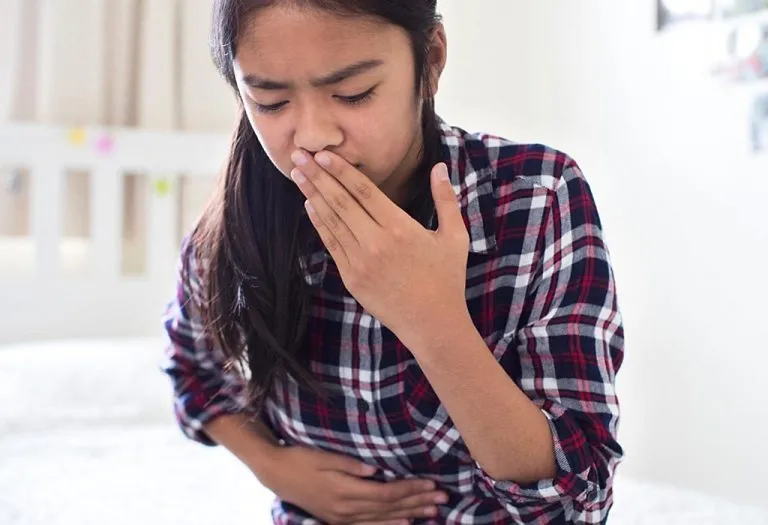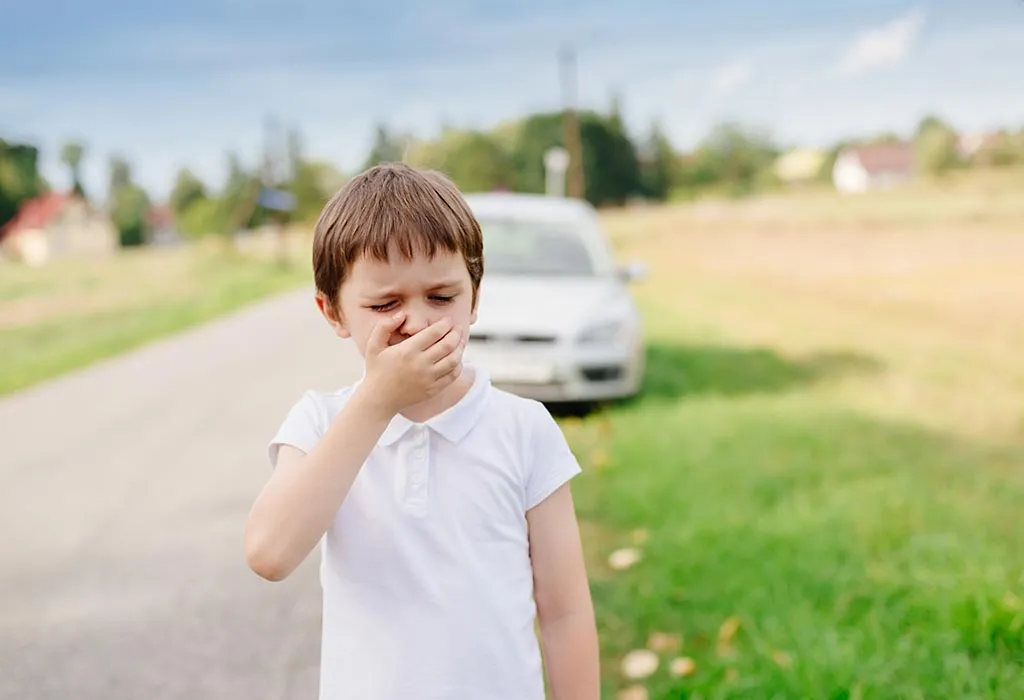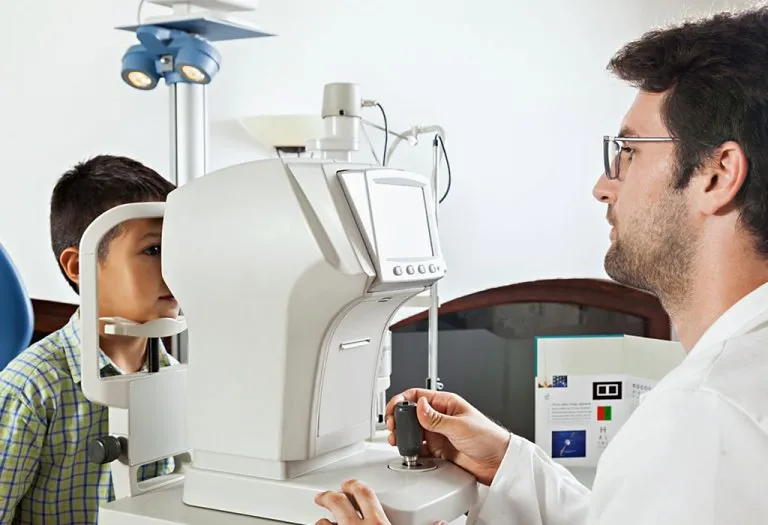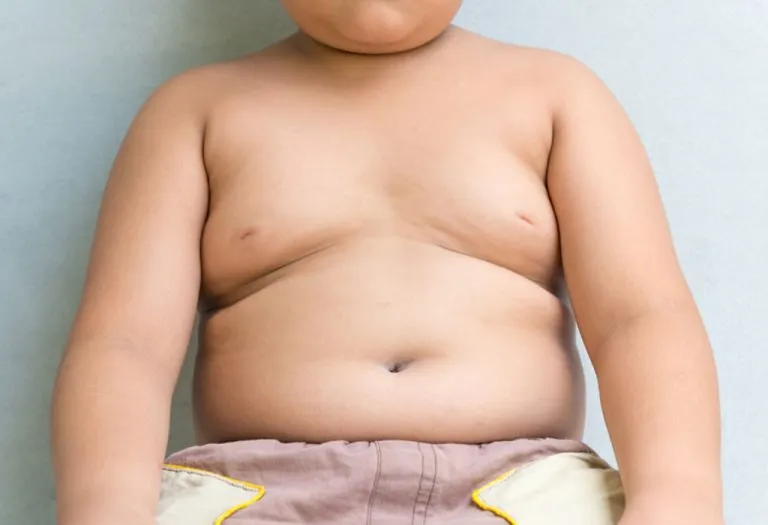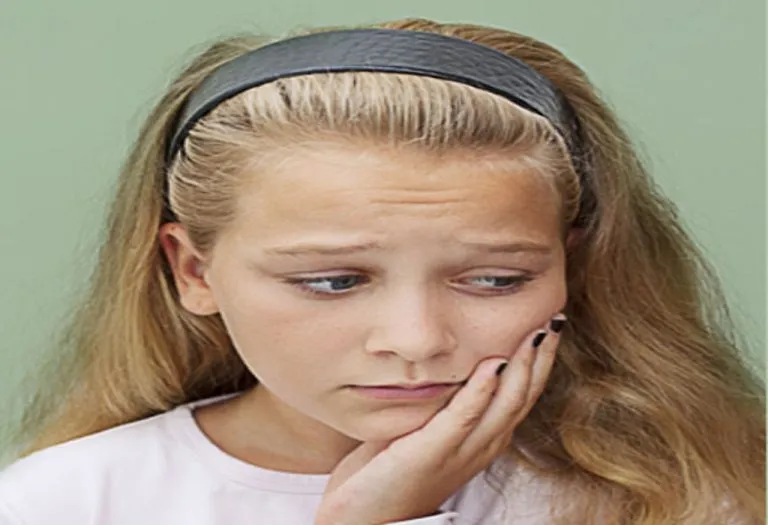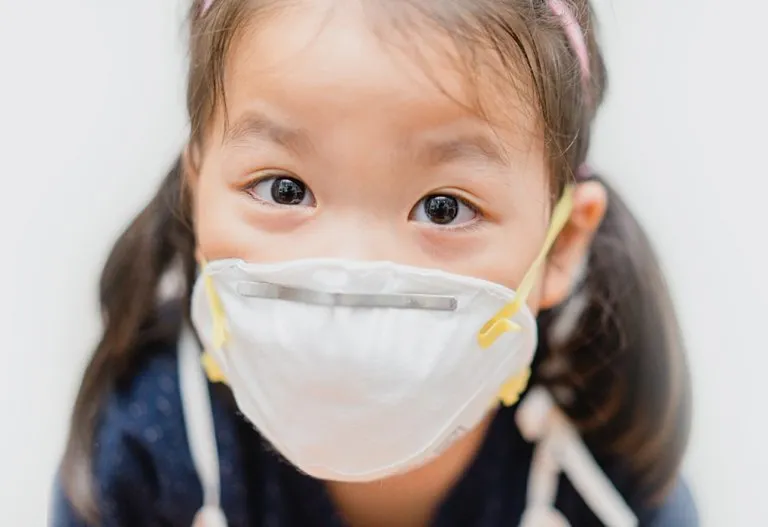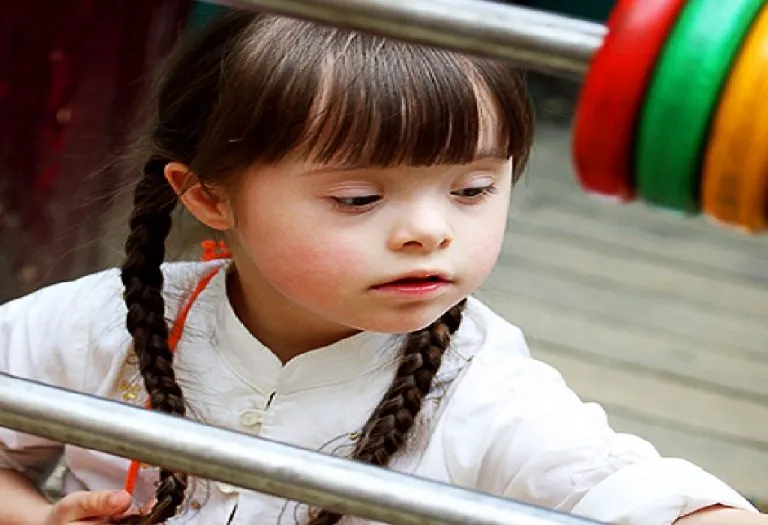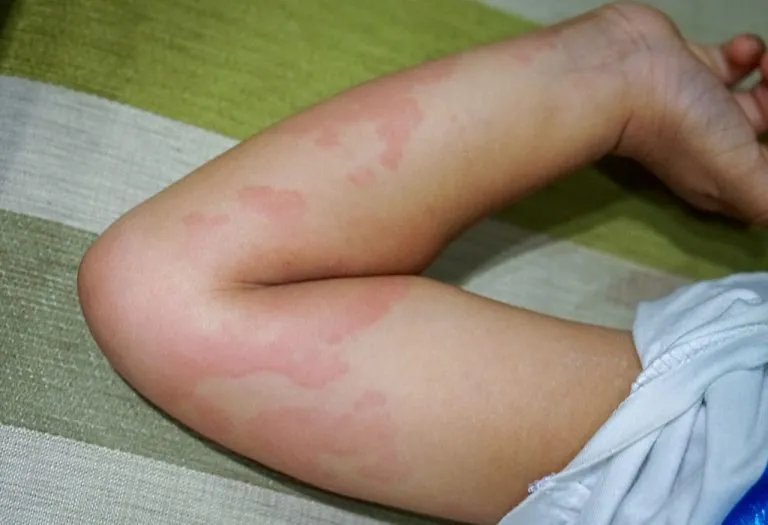Nausea in Kids – Reasons, Remedies and Prevention
Some kids experience nausea due to a variety of reasons, such as motion sickness, viral infections, or even anxiety. While some of them throw up, nausea may not always result in vomiting. Chronic nausea in a child can be quite discomforting, affecting their daily activities, appetite, and mood. This can lead them to avoid certain foods, places, or activities for fear of feeling nauseous all over again. By identifying the underlying cause, you can help your child feel better and prevent further discomfort. Here’s how you can have a better understanding of the phenomenon and take corrective actions.
Symptoms of Nausea in Kids
Nausea in kids can be difficult to identify, especially if they are too young to express what they are feeling. Recognizing the symptoms early can help in addressing the issue and preventing further discomfort. Here are some common symptoms of nausea in kids:
- Complaints of a queasy or upset stomach
- Pale or sweaty skin
- Excessive drooling or swallowing
- Reduced appetite or refusal to eat
- Restlessness or irritability
- Feeling dizzy or lightheaded
Causes of Nausea in Children
Some reasons for nausea can stem from environmental or behavioral conditions, while others could usually be a result of something wrong inside the body itself.
1. Food Poisoning
For many children, this is one of the major reasons for nausea. The propensity to eat outside, whether it is at restaurants or at the street stalls, can expose kids to various food items that are not prepared the right way. If your child already has a weak digestive system, he is more vulnerable to it, and eating undercooked or contaminated food can result in nausea, accompanied by vomiting, diarrhoea, and stomach ache.
2. Excessive Eating
Children need to be told to eat properly when they are young. This involves telling them to eat appropriate quantities. Every time a child encounters his favourite food item, he goes all out and eats as much as he can before realising that his stomach is already full. Overeating or binging can make the stomach feel fuller than usual and make the child nauseous.
3. Various Illnesses
Illnesses due to a disease or an infection can upset a child’s stomach or even cause symptoms of nausea, especially when he sits up. Most of these illnesses are caused by infections of the ear or stomach, along with influenza and fever.
4. The Result of Anxiety
This might come as a surprise, but despite being subjective to each individual, your little kid might feel the full blast of anxiety in certain instances. His school life can present a ton of overwhelming challenges revolving around incomplete homework, not being prepared for an exam, nervousness before going on stage, etc. This stress can manifest in severe anxiety and result in a proper biological reaction reminiscent of nausea.
5. Allergic Reaction
Similar to food poisoning, consuming certain food items that your kid is allergic too, could trigger reactions within his body, causing him to feel nauseous. Some food items have higher chances of allergies, such as eggs, milk, peanuts, wheat, seafood, etc. Nausea is usually accompanied by pain in the stomach when it is a food-based allergy and occurs within an hour or so after consuming food.
6. Stomach Infection
A number of bacteria, parasites, viruses, and other harmful microbes target the stomach and cause immense discomfort in a child. When this happens repeatedly, the stomach starts reacting to it by wanting to expel it out and cause nausea to set in. This could also ultimately cause vomiting and diarrhoea.
7. Motion Sickness
Children and adults alike suffer from this problem to varying degrees. When the eyes see motion taking place inside the car, but other senses fail to notice it, the brain diagnoses it as a sign of being poisoned and triggers nausea to set in so that the poison can be vomited out.
8. Acid Reflux
Children who suffer from gastroesophageal reflux disease (GERD) or acid reflux may experience nausea due to stomach acids flowing back into the esophagus. This irritation can cause discomfort, nausea, and even vomiting after meals, especially if the child lies down immediately after eating.
9. Dehydration
When a child is dehydrated, their body may not function properly, leading to symptoms such as nausea. Dehydration can result from insufficient fluid intake, excessive sweating, or prolonged bouts of vomiting and diarrhea, causing the child to feel nauseous.
10. Migraine
Children can experience migraines, just like adults, and one of the common symptoms is nausea. Along with a severe headache, sensitivity to light and sound, dizziness, and nausea can be signs that your child is suffering from a migraine.
11. Heat Exhaustion
Spending too much time in the sun without proper hydration can lead to heat exhaustion in children. This condition often causes symptoms such as nausea, dizziness, and weakness as the body struggles to cool down.
12. Certain Medications
Some medications, such as antibiotics or anti-inflammatory drugs, can cause side effects like nausea. If your child is on a medication regimen and begins to experience nausea, it might be related to the treatment they are receiving.
13. Exposure to Strong Smells
Children are often more sensitive to strong odors such as perfumes, cleaning products, or even certain foods. These smells can trigger nausea in some children, especially if they are already feeling unwell or are sensitive to their environment.
14. Constipation
When children suffer from constipation, the buildup of waste in the intestines can lead to discomfort and nausea. As the stomach struggles to process food, nausea may arise due to the sluggish digestion process.
15. Food Intolerance
In addition to allergies, some children have food intolerances, such as lactose intolerance, which can lead to nausea. Consuming foods that their body cannot properly digest can cause nausea, bloating, and discomfort.
16. Emotional Distress
Emotions such as fear, sadness, or anger can affect a child’s physical health. Intense emotional distress can sometimes cause nausea as the body responds to stress, much like how anxiety triggers nausea.
17. Low Blood Sugar
When a child’s blood sugar levels drop too low, it can result in symptoms like dizziness, weakness, and nausea. Skipping meals or not eating enough can lead to low blood sugar, making the child feel lightheaded and queasy.
Diagnosis of the Cause of Nausea in Kids
Diagnosing the cause of nausea in kids can be challenging, as there are numerous potential triggers. A thorough evaluation, including medical history and physical examination, can help identify the underlying issue and determine the appropriate treatment.
Here are some common methods used to diagnose the cause of nausea in children:
- The doctor will ask about the child’s medical history, such as symptoms, eating habits, and any recent illnesses, to identify potential causes.
- A general physical exam can help assess the child’s overall health and detect signs of infection, dehydration, or abdominal pain.
- Blood tests can be used to check for infections, dehydration, or imbalances in electrolytes or blood sugar levels.
- Urine tests can help detect urinary tract infections, dehydration, or other metabolic issues that could lead to nausea.
- If gastrointestinal issues like infections or parasites are suspected, a stool sample might be analyzed.
- An ultrasound, X-ray, or CT scan can help visualize the digestive system to identify abnormalities like blockages or inflammation.
- If food allergies are suspected, the doctor may recommend allergy tests to identify triggers that could be causing nausea.
- Keeping a symptom diary can help parents and doctors track specific triggers, such as foods, medications, or activities, that lead to nausea.
Treatment of Nausea in Children
Treating nausea in children depends on the underlying cause, but most cases can be managed with simple remedies or medical interventions. It’s important to address both the symptoms and the root cause to provide relief and prevent further episodes.
Here are some common treatments for nausea in children:
- Hydration: Ensure the child drinks plenty of fluids, such as water or electrolyte solutions, to prevent dehydration, especially if vomiting is involved.
- Rest and relaxation: Encourage the child to rest in a comfortable position and avoid physical activity, which can worsen nausea.
- Ginger or peppermint: These natural remedies can help soothe the stomach and reduce nausea when given in small, child-appropriate doses.
- Bland diet: Offer easily digestible foods such as crackers, rice, or toast, and avoid heavy, greasy, or spicy foods that can aggravate nausea.
- Medications: Anti-nausea medications, such as antihistamines or prescribed antiemetics, may be recommended by the doctor to control symptoms.
- Addressing the cause: Treating the underlying issue, such as infections, allergies, or food intolerances, can help resolve the nausea.
- Acupressure: Gentle pressure on certain points, such as the wrist, may provide relief from nausea, especially for motion sickness.
- Gradual reintroduction of food: After nausea subsides, slowly introduce regular meals in small portions to avoid overwhelming the stomach.
- Avoiding triggers: Identifying and avoiding specific triggers, such as strong odors, motion, or certain foods, can help prevent future episodes of nausea.
How Can You Help Your Child Deal With Nausea?
There are precautions you can take to reduce the chances of nausea triggering and help your child get through it.
1. Avoid Eating Solids
If your child is already has a feeling of throwing up, avoid giving him solid food. They can make matters worse as the stomach will have to work towards digesting the food and throw that up as well as a result. Once nausea wears off, let your child eat easy-to-digest food like simple fruits or porridge to feel better.
2. Hydrate Cautiously
Nausea can mostly result in vomiting, which can result in dehydration and lead you to believe that your child should drink a lot of water. Let your kid sip on water in small amounts or get him fruit juice to keep a good taste in the mouth. Too much water might make him want to throw up again.
3. Take Good Rest
The feeling of nausea can take quite a toll on the body, bringing in exhaustion and fatigue. Once the feeling starts wearing off, let your child lie down for a while and take a nap if needed.
How Can Nausea Be Prevented in Kids?
These tips can help you prevent nausea in your kid:
- Always teach your child to eat in moderation.
- Keep away from strong aromas since they can trigger nausea.
- Don’t let your child eat before travelling if he has motion sickness.
- Maintain hygiene at home and outside to avoid food contamination.
When to Consult a Doctor
Most instances of nausea don’t merit calling a doctor since they are short-lived, and your kid will be back to normal. However, don’t hesitate to consult your doctor if you notice that your child:
- Has high fever
- Is confused and has fainted
- Complains of poor vision and dizziness
- Has pain in the chest and vomits repeatedly
- Vomits along with blood and has severe dehydration
FAQs
1. How can I help my child cope with nausea during travel?
To help manage travel-related nausea, ensure your child has a light meal before the trip, keep the car well-ventilated, and encourage them to look at the horizon instead of focusing on nearby objects. Taking breaks during the journey can also help.
2. Can food dyes or preservatives cause nausea in kids?
Yes, some children may experience nausea as a reaction to artificial food dyes or preservatives. Certain additives can trigger sensitivities in some kids, leading to gastrointestinal discomfort, including nausea. It’s advisable to monitor their reactions to processed foods containing these ingredients.
3. Can overconsumption of sugary foods lead to nausea in children?
Yes, consuming large amounts of sugary foods can upset a child’s stomach, leading to nausea. This can occur due to rapid spikes and drops in blood sugar levels, which can make them feel queasy. Encouraging a balanced diet with limited sugar can help prevent these episodes.
Experiencing nausea is never a pleasant thing. And for kids, it is even more discomforting than adults since it leaves them exhausted and fatigued. Make use of medication to treat motion sickness if it is too severe, and give your child the rest he needs so that he can revive his energy and continue being the wonderful kid he is.
References/Resources:
1. What to Do About Nausea; Nemours Kids Health; https://kidshealth.org/en/parents/nausea-sheet.html
2. Common Causes of Nausea; Nationwide Children’s Hospital; https://www.nationwidechildrens.org/family-resources-education/700childrens/2024/04/common-causes-of-nausea
3. Kovacic. K, Li. B; Childhood chronic nausea: is it just a queasy stomach? (Current Gastroenterology Reports); National Library of Medicine; https://pubmed.ncbi.nlm.nih.gov/24842276/
4. Irritable Bowel Syndrome (IBS) in Children; Stanford Medicine; https://www.stanfordchildrens.org/en/topic/default?id=irritable-bowel-syndrome-ibs-in-children-90-P01983
5. Nausea; Johns Hopkins Medicine; https://www.hopkinsmedicine.org/health/conditions-and-diseases/nausea
6. Russell. A, Stone. A, Walker. L; Functional Nausea in Children: A Review of the Literature and Need for Diagnostic Criteria (Children (Basel)); National Library of Medicine; https://www.ncbi.nlm.nih.gov/pmc/articles/PMC4934479/; March 2016
7. Vomiting or Nausea in Children; Harvard Health Publishing; https://www.health.harvard.edu/decision_guide/vomiting-or-nausea-in-children
Also Read:
Enema for Kids
Snoring In Children
Chest Infection in Kids
Cystic Fibrosis In Babies and Children
Respiratory Syncytial Virus (RSV) in Children
Was This Article Helpful?
Parenting is a huge responsibility, for you as a caregiver, but also for us as a parenting content platform. We understand that and take our responsibility of creating credible content seriously. FirstCry Parenting articles are written and published only after extensive research using factually sound references to deliver quality content that is accurate, validated by experts, and completely reliable. To understand how we go about creating content that is credible, read our editorial policy here.





